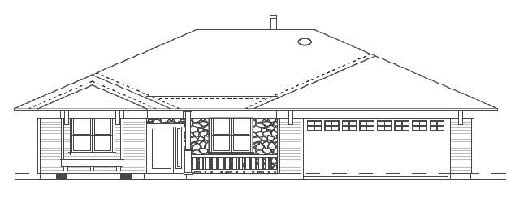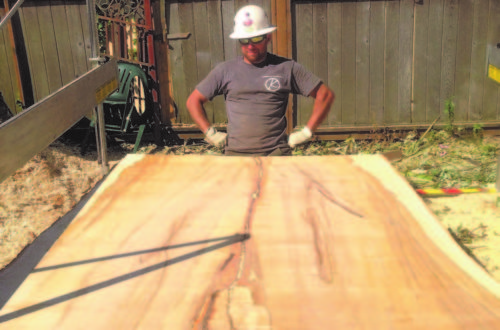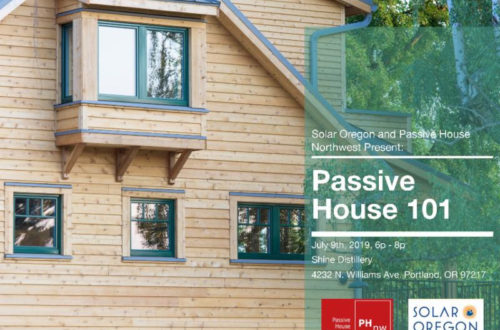Part I: Planning
Introduction
In his book Reinventing Fire, Amory Lovins realistically shows how the U.S. could eliminate the burning of fossil fuels by 2050 using the technologies that are available today. A growing number of forward-thinking people are already moving towards a fossil-fuel free lifestyle by making use of photovoltaic panels, electric drive cars, super efficient homes, and by walking, bicycling and using other alternative transportation options.
According to the U.S. Energy Information Administration (EIA), our homes and apartments accounted for 23% of the total energy consumed nationwide in 2010. The bulk of this energy is produced from the burning of fossil fuels, and its cost averaged out to $2,024 for each and every household in 2009. A reduction in the amount of energy that our homes use would be a win – win situation for both the environment and our pocketbooks.
In this issue, and continuing for the next several ones, we are going to bring you Gail and David Nemo’s story of building their retirement home using a whole different set of design criteria. Criteria that would drastically reduce their home’s environmental foot print, and at the same time, make the home more comfortable and healthier to live in. What the Nemos have created, using their thoughtful personal goals and their mindful concern for the environment, is a home design, that with wide spread adoption, could move us towards Lovins’ goal with a sense of elegant simplicity.
The Neno’s have designed a sensible home of the future in which the investment focus is on advanced sustainable living technology rather than on grandiose and expensive architecture. It has the appearance of being a conventional home built on a lot in an established Portland neighborhood. This is a home that would appeal to a large segment of American homebuyers.
Getting Ready
In 2008, Gail and David were a few years from retirement, but were starting to make plans for that “golden” time of their lives. They had decided that there was a smaller home in their future, one that would be better suited for retirement. Being comfortable, as the years passed, was their primary consideration, with energy efficiency, lower utility bills, and reduced maintenance right behind.
Then Gail had knee replacement surgery and was unable to climb stairs to a bedroom. That’s when, according to Gail, “having to turn our ground floor living room into a makeshift bedroom convinced us that our future home should not only be small, comfortable, and efficient, but also have no stairs.”
So, finding a suitable home for retirement became their long-range objective. At this point they weren’t necessarily focused on building a new home, but the longer they looked, the more they realized they would need to build a custom home to satisfy their needs and wants. They were already familiar with the design/build process, as they designed and built the home they had lived in since 1989. They knew what they were in for.
Finding the Right Place
Given that they planned to install solar panels and wanted a backyard suitable for a garden, a lot with a mostly unobstructed southern exposure became the highest priority. Also, to accommodate a no-stairs entry into the home and a backyard bocce ball court, the lot needed to be flat and wide. After a year of searching, they eventually came across a lot that met their needs and was in an area of Portland that suited them.
Going Green
Planning for retirement was not the only issue that was on the Nemos’ radar screen at this time. In his position with the Portland Development Commission, David saw that there was, within his, and other city organizations, “a growing concern with looming environmental issues and the need to create more sustainable buildings and neighborhoods.” At this same time, the call for incorporating sustainability into our culture was being championed by a growing number of respected voices. Al Gore’s An Inconvenient Truth hit home with a lot of Americans and the Nemos were no exception. By going green, their home would be very comfortable, and at the same time, have a much smaller environmental impact. A perfect fit for them.
Moving forward from this decision point brings many issues and challenges, but Gail and David did their homework. They knew that their home would cost more per square foot to build. They also knew it would be built to standards that were:
- well beyond the existing building codes,
- not familiar to the average building contractor,
- more expensive to build,
- and tricky to finance.
Faced with these problems, they chose to enlist a team of experts to guide them successfully through all phases of their project. For all you would be homebuilders or remodelers, this is a key point. Assistance and experts are available to work with you every step of the way to insure that you receive maximum return on your investment. Their help does not preclude doing a lot of your own homework. As David offers, “I did considerable research on my own of materials, building methods, and codes so that I could better understand the pros and cons, and cost-benefit, of the many decisions that needed to be made during both the design and building process.”
Investing in Platinum
Buying or building a house is the largest investment that most of us will ever make, so it behooves each one of us to make intelligent decisions and choices before we invest in one. Gail and David have set a high standard for wise home investment. Hopefully, others will follow their lead and invest in similar type homes.
First, they decided to invest less in square footage (2000 sq ft versus the average new home of 2400 sq ft) and more in the features that offer:
- extra comfort,
- a healthier interior,
- lower monthly expenses,
- and less impact on the environment.
Also, the Nemos can forever take pride in knowing that their extra investment will continue to produce dollar and environmental savings, not just for years, but for many generations to come.
Next, they did a lot of research and decided to build to the sustainable standards set by an independent third party. They chose to work with the Earth Advantage Home Certification program and build a house that would meet the Platinum standard (the highest level offered). This level gave them the balance between desired features and afford ability that fit their situation.
Finally, to insure that their home would be built to their satisfaction and function properly, they put together the following team:
- Suzanne Zuniga, architect
- Castle Rock Homes, builder
- Peoples Solar, solar system installer
- Harvest the Sky, rainwater harvesting system.
With their site selected, goals defined, and their team in place, the Nemos were ready to move forward. The next installment will highlight some of the home’s design features and construction techniques.
The Green Living Journal would like to thank Blaine Bartholomew and Jim Stevens with Umpqua Bank for connecting us with Gail and David. We also wish to thank Sean Penrith, the former Executive Director of the Earth Advantage Institute, for taking the time to provide details on that organization. And of course we wish to thank the Nemos for taking time out of their very busy construction process to provide us with all the details and for answering all of our questions.




